
© Anubhava. (Click image for larger version)
Bijayini Satpathy
Drive East Festival: Kalpana bill
★★★★★
New York, A.R.T./New York Theatres
5 August 2019
bijayini.dance
www.driveeastnyc.org
www.art-newyork.org/theatres
The Many Faces of Bijayini Satpathy
Some days one is reminded of the privilege it is to live in a city through which pass countless great artists. Some perform in huge venues like the Metropolitan Opera House, others, in small nondescript spaces rented for a week or a month in the most anonymous locations in the city. Last night, at Navatman’s “Drive East” festival, held at the A.R.T./New York Theatres on west 53rd, was one of those days. (The festival continues through August 11, and then moves to San Francisco.) Even Mikhail Baryshnikov knew it was an event not to be missed – he was there.
The featured performer on August 5 was Bijayini Satpathy, an odissi dancer who has appeared here often as part of the Nrityagram Dance Company, led by the innovative dancer and choreographer Surupa Sen. This was Satpathy’s first solo recital. That fact in itself was extraordinary; considering the mastery and magnetism she exhibited in this hour-and-a-half-long solo, one would think she has been doing this all her life. Even with taped accompaniment, she filled the space with her movement and imagination. (The show is entitled Kalpana, which means “imagination” in Sanskrit.) The Indian classical form Odissi contains pure dance, emotional expression, and danced storytelling; she excels at all three. Over the course of the evening, after a ritual of invocation (Mangalacharan), she became a woman at her toilette, the lord Krishna as a mischievous child, an adoring mother, Radha pining for love, and, in a final tour de force, all six of the characters in the epic story of Sita’s abduction, derived from the Ramayana. She was funny, tender, lustful, enraged, proud, seductive, powerful, cunning.
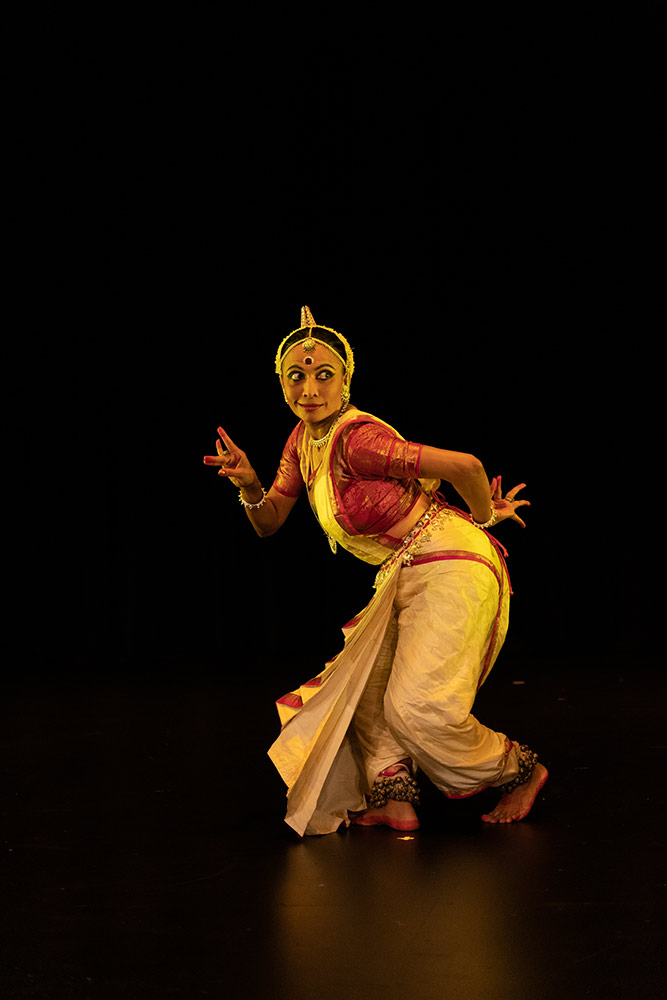
© Anubhava. (Click image for larger version)
I’ve never seen a more vivid performer; her large eyes seem to touch each person in the audience, shining or filling with tears, pupils turning from right to left, eyelids faintly trembling, eyebrows arching expressively. In a moment, she becomes a man, woman, old crone, child, or demon. This tiny dancer can move like a giant. The final work on the program, “Sita Haran” (choreographed by the odissi master Guru Kelucharan Mohapatra) is an astonishing feat of storytelling; Satpathy makes us see the characters, one by one: Sita, delighted by the sight of the golden deer, throwing open the shutters; the deer, frolicking in the forest with giant leaps and skittering steps, nibbling on leaves, fluttering its tail; Rama taking aim with his bow and arrow; the great demon Ravana, stomping and grimacing with a crazed look in his eye. And finally, a giant eagle soaring through the sky and then plummeting to the ground, mortally wounded by one of Rama’s arrows. An epic drama, evoked by a single performer. This, at the very end of a long and dynamice program.
More subtly, in Surupa Sen’s choreography for “Srimati,” Satpathy embodied aspects of feminine beauty, entering the stage with a lilting gait, rocking slightly to the laid-back music of the late Pandit Raghunath Panigrahi (recorded). In this beautifully balanced composition, each movement is shown to the front and to the back, revealing the balance and grace of the female body in motion. At one point Satpathy moved only her arms and shoulders, with immense control, then lowered herself to the ground in one sustained phrase. Her well-honed technique allows for continuous, legato movements, without visible adjustments; she seems to swim through space, using every part of her body. The effects can be big or small. Certain details, like a slide of the toe, register with enormous clarity. (In “Sita Haran,” as the eagle, she stood on one leg, undulating her arms in great, fluid, flapping motions, while turning slowly, staring at the ground like a bird of prey.) In the final bars of “Srimati,” she sat on the floor, turned herself slowly with one foot, moving her arms and head softly to the rhythm, and then rose up again and began to spin faster and faster, as if entering a trance.
Satpathy’s dancing combines propulsion, dynamics, refined musicality, and absolute legibility. Watching her, one feels that the language of odissi is deeply alive, urgent, and universal, like all great art-forms. This solo will doubtlessly be only the first of many – in the future, one hopes, she will be able to add the essential element of live music. It is also to be hoped that she will still be able to dance with Surupa Sen of Nrityagram; their duets, and the affinity they reveal between the two artists, are something precious and rare. Satpathy’s time alone will only make her a fuller, more complete artist in her own right.
She performs in San Francisco on August 15. I promise, she’s worth traveling for.










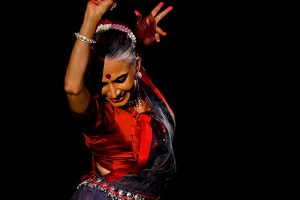

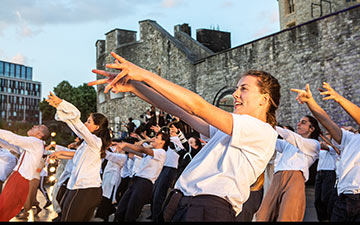
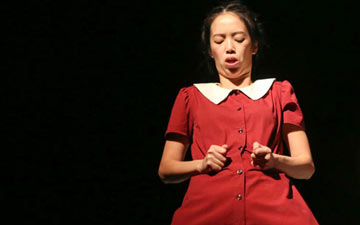
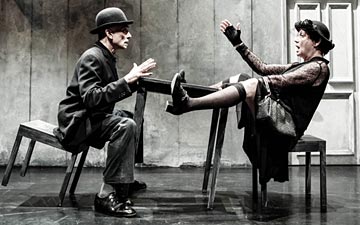


What a ‘Bang on!” write up of an extraordinary performance. I’ve followed, supported and helped present Nrityagram in the past, but this solo show of Bijaini’s is a huge leap forward in terms of the vision of Odissi she shows us. Top producers who have presented us agreed that the show was perfection – I was convulsed with emotion afterwards (and during the who also often found myself chuckling audibly) at her depictions of the characters in stories I have grown up with, which she told in a fresh and delightful way. That deer in the lower photograph made me wonder if she had watched them prance in the fields herself! Brava Marina for being such a great danc writer.
Many thanks, Rajika. It was a wonderful show and I hope she returns soon!
Marina, your featre in the Times sent me a twitter with expectation. I have e-mailed
colleagues here to attend her performance. It sounds very much as if Satpahty’s artistry is on a par with Blasaraswati’s. What a galaxy she must inhabit.
Thank you for the wonderful evocative review. I’m not in NY or would have been at this performance. I recall seeing the great Satpathy in Nrityagram.
One correction is perhaps required in Paragraph Three – “…mortally wounded by one of Rama’s arrows” – The bird in question, Jatayu, was not wounded by Rama but Ravana.
Thank you Marina, beautifully reviewed.
Marina, in my review of Satpathy I refer to your NY Times interview and this wonderful review – such splendid analysis. i would lke to mention one thing — the eagle was wounded by Ravana , not Rama — Rama killed the deer.